Badminton’s World Championships, after a two year sojourn in Asia, returns to Europe with the French capital playing host beginning August 23.
Our preview specialist, Aaron Wong, takes a look at the competition in an unusual year so far for the sport where the country that is most dominant, China, have not featured their top echelon of stars regularly at Super Series tournaments instead choosing to use them in an internal league. Yet, the international rankings of their players have hardly moved or, more importantly, any small movement has not affected their ability to be seeded in Paris.
By Aaron Wong, Badzine Correspondent. Photos: BadmintonPhoto
Which Three for China?
In the last week, the head coach of China, Li Yong Bo, went on record saying he aims for 3 gold medals due to their unexpected Uber Cup defeat back in May. It comes across as modest but really it was not a risky thing to say. It’s basically stating the obvious as China have only once fallen short of 3 golds in the preceding decade.
Which 3 golds did he mean? He spoke positively about men’s singles, was unsure about men’s doubles, and would know full well that mixed doubles last topped the podium in 2001. Reading between the lines, what is left is to rely on women’s singles and women’s doubles to deliver the goods which is incongruous with his publicly stated feelings about the Uber Cup outcome. Shrewdly, he left unsaid any outright specifics.
Two Questions
The big questions are about adjustment. How well will the Chinese doubles players adjust to reforming the international partnerships which were split apart when representing different regions in their domestic China Badminton League? Next, how prepared are the rest of the world to cope again with coming up against the Chinese assault?
As a result of the top Chinese players’ absences on the international scene lately, it is hard to tell how this race will be won in terms of momentum leading into the tournament. So perhaps the clues will come from identifying who the big occasion players are as well as this year’s breakthrough performers as theirs will be the exciting matches to watch come the middle to later rounds, especially when the former have to face the latter group.
Mixed Doubles: Europeans Again?
In mixed doubles, the highly decorated pairs include twice World Champions Liliyana Natsir / Nova Widianto (INA) and recent Olympic gold medallists Lee Hyo Jung / Lee Yong Dae (KOR), but the story to follow is that of the defending champions Kamilla Rytter Juhl / Thomas Laybourn (DEN) precisely because of their status. Are they greater than one-hit wonders? The Danes touched the world #1 ranking briefly during the year and, seeded second here, are blessed with a draw that can see them arrive relatively unscathed through to the semi-finals. The single most interesting to player to watch, however, is Christinna Pedersen (pictured) of Denmark for her calm temperament and businesslike execution of shots. She seems not easily ruffled as the intensity of a match rises.
A semi-final-worthy encounter happening in round 3 should be Zhang Yawen / Tao Jiaming (pictured top) of China versus Indonesia’s Vita Marissa / Hendra Gunawan (INA). In this match, both women take on the alpha role in the partnerships and it is the mentally sharper and astute one on the day who shall prevail.
Women’s Doubles: Is it Korea’s Time?
It is a shame Zhang Yawen cannot defend her World title as partner Zhao Tingting retired. Zhang’s proteges Tian Qing and Pan Pan (pictured below) – with whom she amazingly won major titles with in the same year as also partnering Tingting – are reunited and look the freshest combination of the four Chinese pairs heading to France. Their first match against Olympic silver medallists and unseeded sentimental favourites Lee Kyung Won / Lee Hyo Jung (pictured) of Korea is one to circle. Whoever wins should face Olympic gold medallists Du/Yu at the quarter-final stage. Unless they have innovated their style, Du/Yu are a one trick pony, with power their weapon and impatience their Achilles heel, and both Pan/Tian and Lee/Lee have beaten them before. An Olympics rematch, though, would be nice.
Women’s doubles has been the mainstay of the Chinese badminton juggernaut, having hugged the title repeatedly these past fifteen years. Lee/Lee, in the twilight of their partnership, remain the best hope for breaking this stranglehold. The next best to challenge the Chinese are the Taiwanese Chien/Cheng but they don’t have a good track record of it. Fortunately, they have no Chinese pairs in their way until at least the semi-finals if not the finals. If there ever was an opportune time to buck the trend, it is now when none of the Chinese pairs are of the calibre of the legendary double Olympic Gold medallists Ge Fei / Gu Jun or six-time All England Champions Gao Ling / Huang Sui.
Men’s Doubles: Is it Malaysia’s Time?
If Martians visited Earth, they would be hard pressed to believe that Malaysia is a badminton powerhouse. Malaysia has zero gold medals to boast of and their best chance lies in the hands of temperamental world #1 men’s doubles pair Koo Kien Keat / Tan Boon Heong (pictured below). Their country keeps wondering when the return on investment will happen.
To harness their best, Koo/Tan have been training at the University of Bath in the lead-up in order to minimise distractions. Despite their top billing, they face stiff tests early on with German Open champions Chai/Zhang of China in round 3, and surviving means probably meeting last year’s runners-up Jung/Lee of Korea. One thing in the Malaysians’ favour is playing away from home, far from the constant backseat-driver feedback of their local press and heckling from the peanut gallery.
The defending champions, China’s Fu Haifeng / Cai Yun, may be short on court practice at the moment but they possess a rare quality of dependability honed over years of practising single-minded determination, such that this attitude and method have become second nature. They have matured and don’t need to work on these aspects like, say, the Malaysians. Thus, they still represent a threat as do, arguably, the most improved pair of the year Fang Chieh Min / Lee Sheng Mu of Chinese Taipei. The early thrills in the fastest discipline for the spectators in the Stade Pierre du Coubertin are provided by the first round tussle between England’s Clark/Robertson, the 2009 Singapore Open winners, and 2005 World Champions Bach/Gunawan of the USA.
Women’s Singles: Is it India’s Time?
Women’s singles, like women’s doubles, has suffered an image of being predictable. There are hints that the singles landscape is opening up, what with Korea’s Bae Seung Hee, ranked #17, beating world #1 Wang Yihan of China in the Uber Cup final, and Cheng Shao Chieh ranked #49 edging out Bae to take her home Chinese Taipei Grand Prix Gold title.
As fun as the who-can-beat-who discussions have become, the higher competency is travelling the full distance in a tournament. The Worlds title is up for grabs by anyone with proven credentials in this regard. Lu Lan, herself is not back to defend but her country is. Who can miss noticing the four players representing China, each with the surname Wang, and one dropped into each quarter of the draw to spread out the menace?
The two players new to the world #2 spot this year are worthy of special attention stemming from their latent hunger to justify their ranking. Second equates to serious contender. India’s new darling, Saina Nehwal (pictured), is currently #2 after winning three tournaments back to back (India Grand Prix Gold, and both Singapore and Indonesia Super Series). One suspects that her coach would have set a semi-finals target where in all likelihood she would meet the player she usurped the spot from, Wang Xin (CHN). The Chinese leads their head to head 2-0 going back 14 months. The opportunity to compare both women again is intriguing, in particular to gauge whether the ranking is a true reflection or gained from participating in more tournaments than the next person.
Men’s Singles: Not Just Another Title for Lin Dan
Should China’s Lin Dan (pictured), the current world #3 and Beijing Olympics gold medallist, claim this edition he will indisputably be the most dominant singles player, female or male, in World Championship history. He has already earned 3 crowns – at Madrid, Kuala Lumpur, and Hyderabad – which is ahead of anyone but it can be argued that these were won over a 4-year period and therefore somewhat equivalent to players having won 2 consecutive world titles when the event was biennial.
Lin was consistently world #1 and lethal by 2005 but it has been his mastering of make-it-happen ambition since then that has elevated him to greatest of the greats since the carbon racquet era. Poised for this milestone of writing in the history books his total dominance of the men’s singles scene for 5 years running is an opportunity few, if any, would deny that he can convert.
The most anticipated match of the whole tournament is world #1 Malaysian Lee Chong Wei and Lin Dan colliding in the semi-finals. Lee’s shy persona and abundant talents endear him to so many spectators and players alike that this match-up, though one-sided of late, has not yet become a boring spectacle. This initial fervour overshadows the prospect of the final featuring either Olympic bronze medallists Peter Gade (DEN), earned at Sydney, or Chen Jin (CHN), earned at Beijing, on the other side. Gade, world #2 now (and also as far back as 1999), would not have discounted himself from winning upon seeing that his side of the draw contains the more defensive of the seeded players. However, few will be quick to bet against Indonesia’s Sony Dwi Kuncoro (pictured below), either, and he is lurking in Gade’s quarter. Sony, ever the darkhorse, has a history of making things very difficult for the top seeds, especially at the Worlds.
Relevant to 2010
For players, winning a World title which takes a week trumps even reaching world #1, a pinnacle of achievement that takes years.
Despite losing some of its shine since turning into an annual fixture, it is still the winners of this particular event who will be remembered as relevant to the scene because over time, entire years are reduced in our collective memories to a one-liner in record books or just a couple of names on the tip of our tongues.
The World Championships is the event this year that will restore order in the badminton universe as all the top nations appear and there is full attendance of the top five in all five disciplines. A cast as comprehensive as this has not been represented this year – not even at the Thomas and Uber Cups in May, where entire nations like England and Thailand were absent and where injuries as well as mixed doubles specialization, kept stars like Tine Baun, Lee Yong Dae, Robert Mateusiak, Zheng Bo and Vita Marissa out of the picture.
Badzine will be on site in Paris all week to bring you all the action, complete with live photos from BadmintonPhoto.
To see the complete draws for the 2010 Yonex BWF World Championships, CLICK HERE
![WORLDS 2010 Preview – Whose Time is it? Badminton’s World Championships, after a two year sojourn in Asia, returns to Europe with the French capital playing host beginning August 23. Our preview specialist, Aaron Wong, takes a look […]](http://www.badzine.net/wp-content/uploads/Newsflash-thumbnail.png)
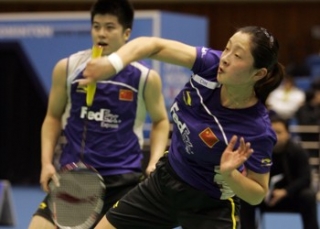
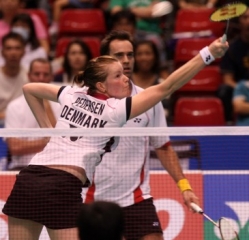
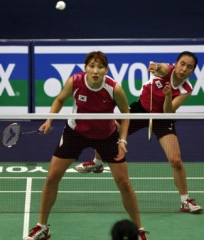
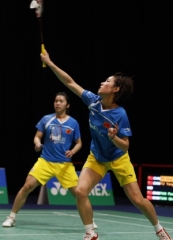
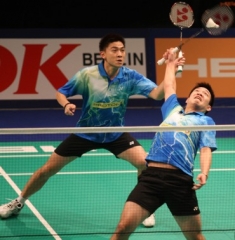
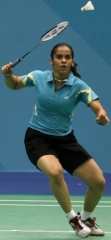
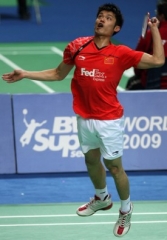
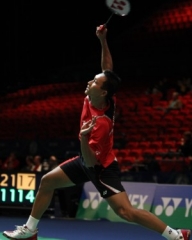

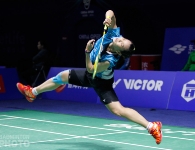
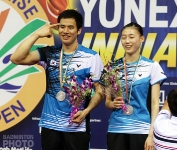
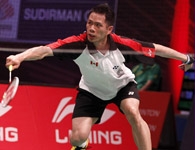
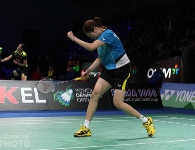
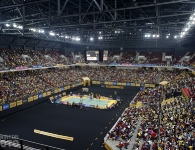
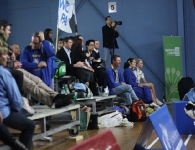
Leave a Reply